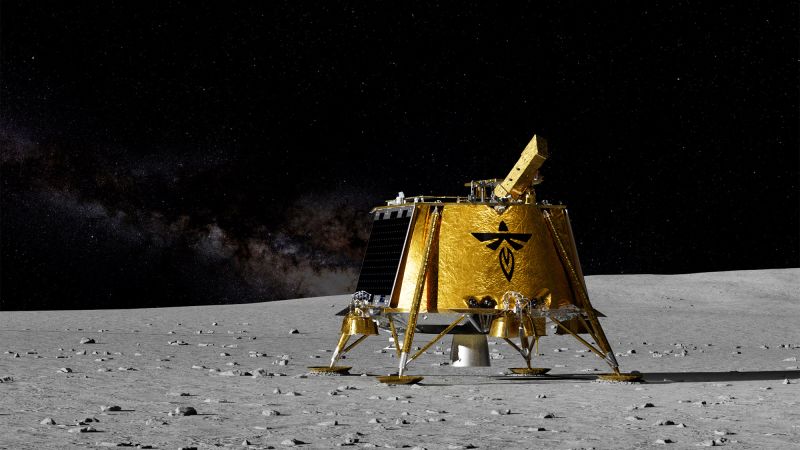New moon-landing race: The next leg is about to kick off — and it could be the most exciting yet

Lunar Renaissance: A Race to Explore and Conquer the Moon
A New Lunar Space Race
The past few years have witnessed a surge in the lunar space race, as various countries and companies launch robotic spacecraft to the moon.
After several recent setbacks, including landing crashes and a divot on the moon, 2025 promises a second chance for these missions to redeem themselves and welcome new players.
The Moon Shot Lineup for 2025
The year kicks off with the launch of two lunar landers: Firefly's Blue Ghost and Ispace's Resilience.
Firefly attempts its first moon landing, while Ispace seeks redemption after its previous lander crash.
This Week's Double Duty: Firefly and Ispace
Firefly's Blue Ghost aims to spend 45 days studying the Mons Latreille volcanic feature and collecting data on soil, lunar magnetism, and radiation.
Ispace's Resilience carries a rover and instruments to test food production, monitor radiation, and target the moon's far northern Mare Frigoris region.
Intuitive Machines: A Second Shot at Perfection
Following its historic 2024 landing, Intuitive Machines plans another Nova-C mission to the moon's south pole, a critical region for water exploration.
PRIME-1 investigates water ice, while NASA's Lunar Trailblazer seeks to detect water using remote sensing.
Blue Origin's Lunar Pathfinder
Jeff Bezos' company prepares a Blue Moon pathfinder lander to test the spacecraft's design and engines before crewed missions.
NASA's SCALPSS cameras will monitor moon dust's reaction to lander engines.
Later This Year and Beyond
Despite the complexity that often leads to delays, more missions are scheduled for later in the year.
Intuitive Machines eyes its third mission, while Astrobotic plans to launch its Griffin lander and test its lunar power business.
If development progresses as planned, SpaceX's Starship spacecraft could attempt an uncrewed moon mission in 2025.
The Greater Context of Lunar Exploration
The flurry of moon missions reflects a renewed global interest in lunar exploration and the desire to establish a permanent presence.
NASA seeks to compete with China's plans for a 2030 moon landing, driven by both nationalistic ambitions and scientific questions about water and the history of the Earth-Moon system.
"The moon holds a treasure trove of knowledge about our planet's history," says Dr. Bethany Ehlmann, principal investigator for NASA's Lunar Trailblazer orbiter. "Exploring its water resources sheds light on how Earth acquired its own."